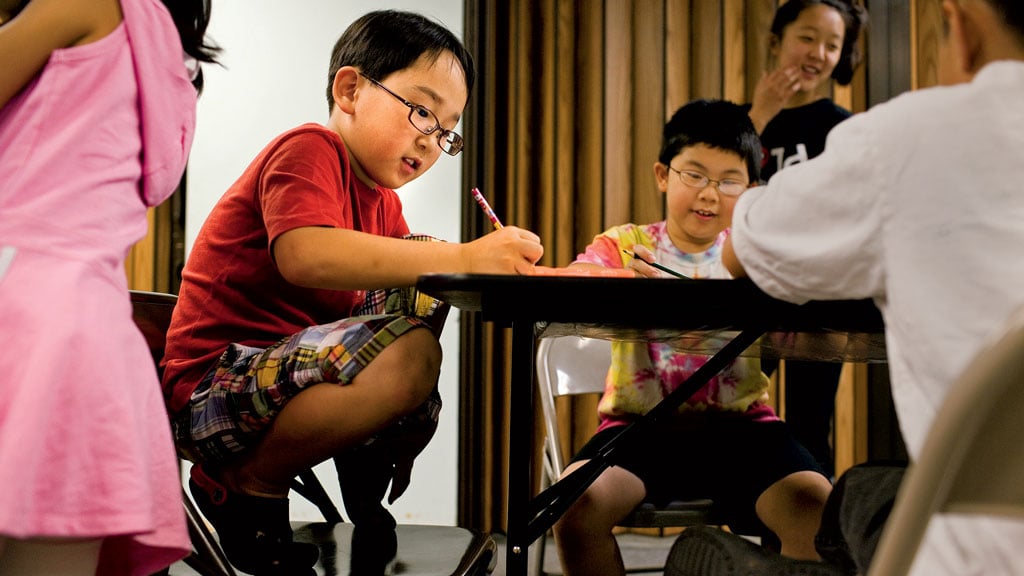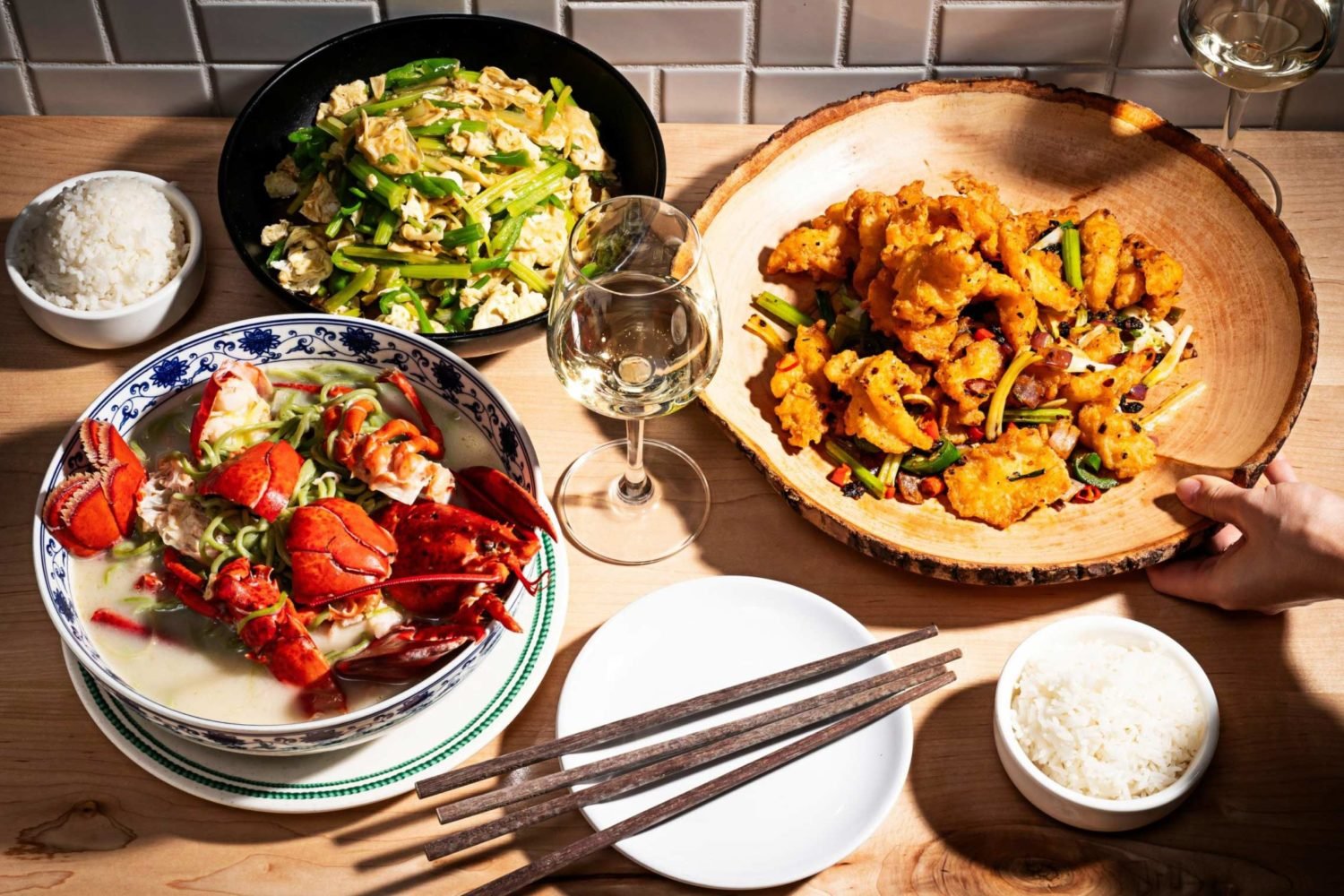Just outside Annandale’s Koreatown, a stately dome modeled after Monticello’s stands above the entrance to the best high school in America. The 1,800 students study nanochemistry and quantum physics in labs funded by Lockheed Martin and Northrop Grumman. Seniors count NIH and Smithsonian scientists as mentors, and their average SAT scores top Fairfax County’s by 526 points. They have a planetarium and a supercomputer, and the tuition is nothing. Zero dollars. Free.
Thomas Jefferson High School for Science and Technology is a Fairfax County public magnet school so competitive that its 17-percent acceptance rate is identical to Georgetown University’s. Since 2008, Newsweek and U.S. News & World Report have both ranked it the number-one high school in the country three times. TJ enrolls students from six Northern Virginia school districts, and parents have been known to move from other cities, even countries, to ensure their children’s eligibility. If they can afford it, they buy homes near Longfellow Middle School in McLean or Carson Middle in Herndon, both of which have a reputation for getting more students accepted into TJ than any other middle school does. Kids, for their part, attend afterschool academies to prepare for the admission test—some starting as early as third grade.
For ambitious families, getting kids into TJ isn’t easy, but it is what’s best. Neighboring high schools such as Annandale and Falls Church have some of the lowest graduation rates in the school district. At TJ, 99.8 percent receive diplomas. On its safety report, Annandale High counted 28 “disorderly or disruptive behavior offenses” in 2015, and West Potomac High reported 19. TJ had just three.
But even as the school prepares kids to solve mind-boggling math, one challenge has flummoxed TJ since its founding: diversity. Despite being in a district that’s 19 percent Asian, 10 percent African-American, and a quarter Latino, its student body is nearly two-thirds Asian, 1.5 percent African-American, and only 2.2 percent Latino. That racial inequity has persisted for nearly 20 years. This fall, TJ will unveil a new battery of admission tests that could leave the disparity even more pronounced.
TJ was designed to be elite—founded in 1985 to educate gifted students and to help attract high-tech business to the area. Companies donated $4 million worth of equipment to get the school’s laboratories off the ground. Debate over which kids would learn in those labs quickly followed. Should TJ rely on standardized testing to decide admissions? Or should it include what one Fairfax County School Board member at the time called “human judgment”?
The year before TJ opened, a compromise was struck, shaping the process through which thousands of eighth-graders compete for 480 spots. In the first stage, applicants take an entrance exam. Their scores and GPAs determine whether they’re asked to submit essays, résumés of activities and awards, and teacher recommendations in the second round. A committee then scrutinizes the submissions for evidence of STEM (science, technology, engineering, and math) aptitude, intellectual passion, and any background or skills that will promote “diversity in the student body.” But in the first disqualifying round, decisions are numbers-driven and gender-, race-, and income-blind.
Within a few years of the school’s opening, white and Asian students made up more than 90 percent of the population. So in 1990, the school board quietly decided to take a second look at black and Latino students whose scores didn’t make the first cut. It launched an enrichment program called Visions to help prepare minority middle-school students for TJ’s advanced curriculum. That helped. By 1997, African-American and Latino students made up 9.4 percent of TJ’s population, the highest representation it would ever achieve.
But Supreme Court decisions in the late ’90s threatened affirmative-action policies at state universities, and parents challenged them in local schools. In 1997, a federal court struck down a lottery that favored black and Latino students at an Arlington County kindergarten. According to Bob Frye, who was on the school board at the time, Fairfax County’s lawyers said TJ’s affirmative-action plan had to go. Board members voted to end Visions, too, worried that it would invite lawsuits.
African-American and Latino representation at TJ declined precipitously, with just 98 students remaining by 2000. At the request of a concerned school board, then superintendent Daniel Domenech proposed a change to admissions protocol. In the second round, a certain number of seats would be set aside for kids from each of the county’s neighborhoods. The move wouldn’t guarantee diversity, but it would give poorer kids a better shot.
The pushback came loud and fast. Parents from McLean and other wealthy neighborhoods booed Domenech at a school-board meeting and e-mailed by the hundreds to protest. They feared their kids would be “cheated out of a seat at Jefferson,” says Domenech, and the school board killed his plan. Over the next few years, Fairfax County launched at least three enrichment programs for minority students, including summer test prep and school-day programs. They didn’t work.
Finally, in 2004, the board hired experts to examine TJ’s admissions process. The panel’s report found that “flaws in the process disproportionately reduce the chances of admission for African American and Hispanic students.” It proposed reading a student’s entire application, including essays and teacher recommendations, in the first round.
Perhaps unsurprisingly, when the board held hearings on the proposal the following summer, parents once again complained—some about how quickly the changes would be implemented, others that subjective criteria could hurt Asian students who might not be as proficient in English. By September 2004, the proposal was dead.
Says Elizabeth Lodal, TJ’s principal at the time: “I think they missed an incredible opportunity to have made a real difference.”
***
In 2008, U.S. News named TJ the best high school in America for the first time. Application rates shot up—more than 3,300 students applied in 2010—while the school population shifted from majority white to majority Asian. But just beyond its woodsy campus, the Latino population was the one growing fastest.
The gap between the number of black and Latino students at TJ versus the demographics in Fairfax County schools is evidence that, intentionally or not, “the school district is practicing discrimination,” says Donna Ford, an expert on multicultural gifted education at Vanderbilt University. Her assessment is based on the “four-fifths rule,” a formula devised by the US Equal Employment Opportunity Commission. According to the rule, a school’s demographics should be within 20 percent of the district’s. For TJ, that means a student body at least 19 percent Latino and 8 percent African-American.
Still, adapting EEOC’s hiring guidelines to schools is controversial. Last year, Missouri became the first state to adopt proportional guidelines for admitting students to its gifted programs. Though other districts are taking note—and the practice was successfully argued in an Illinois court—it’s far from common.
For schools that have embraced the idea, it goes beyond politics or perceived fairness. Studies demonstrate that students in diverse schools develop more complex thinking skills and are better prepared for a diverse workplace. A 2010 analysis found that kids of all backgrounds are likelier to perform better in math when they attend racially and economically diverse schools. And being good at math is the point of TJ—it’s in the mission statement.
The admission test is undeniably a part of the school’s persistent diversity problem. Research shows that black, Latino, and low-income students tend to score worse on standardized tests than their white and Asian counterparts. But many in Fairfax argue that the tests are the most objective way to screen students. “I think, given the high degree of rigor. . . it’s appropriate to have a standardized test as a part of the application process,” says school-board member Megan McLaughlin, a former admissions officer at Georgetown.
McLaughlin, like other board members, still worries about Washington’s booming test-prep industry. Modeled on Korean “cram” schools, classes meet after school, on weekends, and throughout the summer. “They’ve become professionals at that process of getting into TJ,” says Josh Silverman, a private tutor in the area.
Silverman graduated from TJ in 1994, during the school’s multicultural heyday, and his less intensive 20-hour TJ prep class ran parents $600. “I did feel like I was becoming part of the problem,” he says.
So in the fall of 2015, Silverman launched a free tutoring program instead to help black and Latino kids prepare for the test. By last November, 29 students were enrolled in his weekend classes, including 12-year-old Stephanie Castro, a seventh-grader already taking Algebra 1. Her parents are immigrants from Mexico.
If Castro doesn’t get into TJ, her assigned high school is West Potomac. According to U.S. News, only 62 percent of eligible students there took Advanced Placement exams to prepare for college. At TJ, that number was 100. West Potomac High carried a college-readiness index of just 46.2 percent. At TJ, it was 100.
***
Last spring, the company that makes the TJ test announced that it would no longer produce it. A committee scrambled to come up with a new process. But instead of less standardized testing, it has opted for more, adding a science section for the first time.
“Is it gonna once again advantage those kids whose parents can pay to sign them up for special prep camps to now be prepping for science testing as well?” Megan McLaughlin asked when presented with the new plan.
Admissions director Jeremy Shughart doesn’t think so. The firm that markets the math portion of the test, Quant-Q, doesn’t release materials to the public, a practice that should make them harder for test-prep schools to crack. Some board members are even hopeful the science section will boost scores for African-American, Latino, and low-income kids whose math scores aren’t as strong.
One solution still not on the table, though, is a more holistic evaluation. As board member Tamara Derenak Kaufax says, “If things don’t change with this next round of testing . . . I would definitely be willing to [speak] to my board on what we can do to make this more equitable for everyone.”
This article appears in the May 2017 issue of Washingtonian.


















